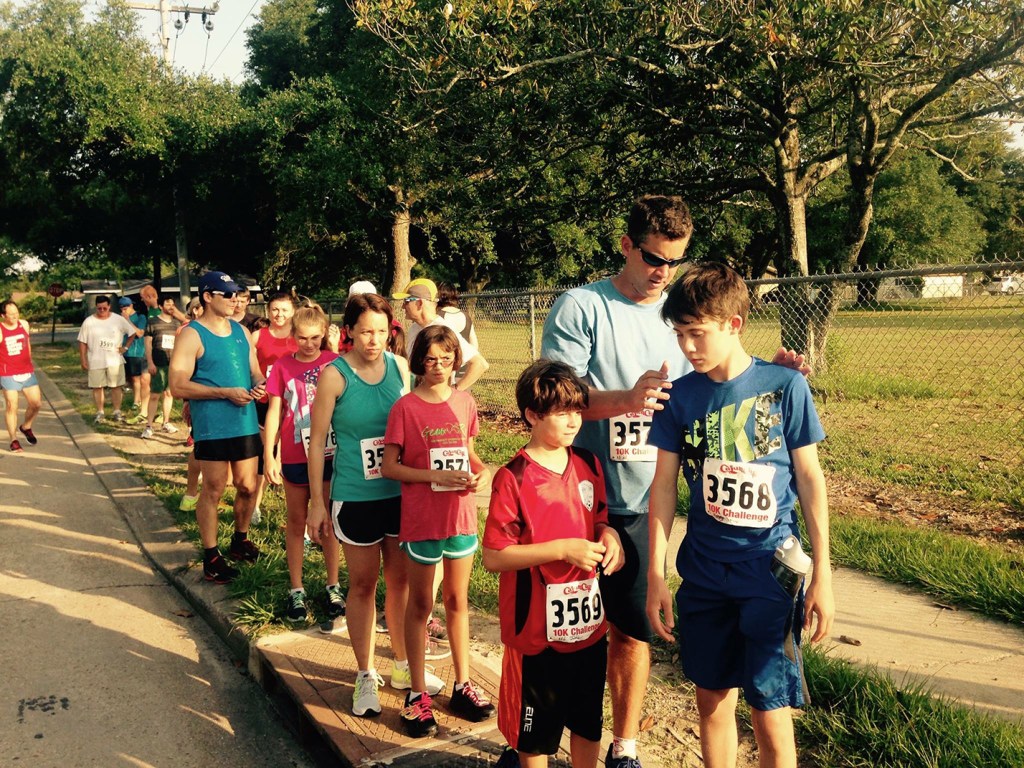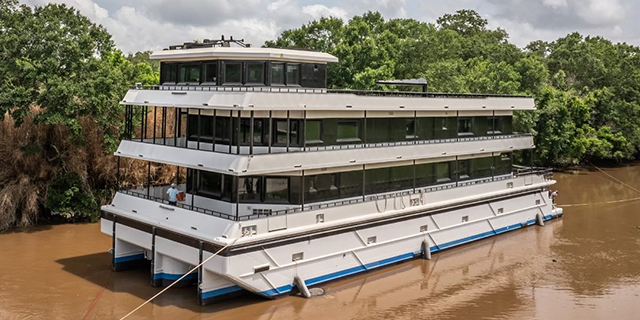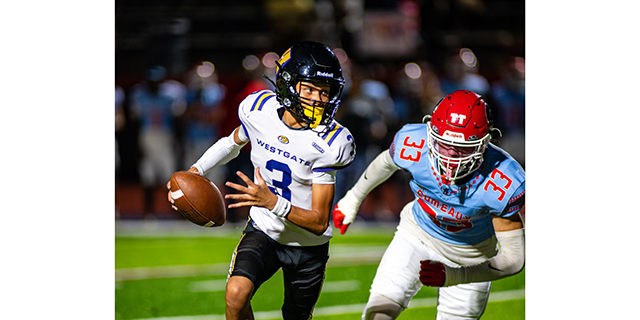The Run Around
Published 9:27 am Friday, July 15, 2016

- The Run Around
By Amanda Jean Harris / Submitted Photos
It all started with Torture Tuesday. Maybe not an appealing name for a group running activity, but it just may have been the launching pad for a bevy of group runs in the area that can be equally social and running-centric, ending at local restaurants or bars and uniting runners together several days a week.
br
br
Torture Tuesday
br
Torture Tuesday was a speed work run on the UL track. Then came laps around Bendel Gardens. Eventually, there was the organization of runs and reaching out to local pubs who agreed to host running events.
br
“And it’s just blossomed,” says Todd Delahoussaye of Cajun Road Runners. “Originally it was more of a workout and now it’s a workout and it’s social. The social portion developed because the running community wanted more than a workout.”
br
As Geaux Run owner and manager Mary Hays describes the running groups connected to the local running store retailer, she mentions the connection they have off the pavement as well as the accountability during runs. They may meet to run, but most walk away friends, going to each other’s baby showers, weddings and being there during tough times.
br
br
Running Relationships
br
Runners know, there’s something bonding about connecting with people as you run.
br
br
“One of our runners was in the ER and everyone got a card and we all signed it and it’s someone we would never have known without the running group,” Hays says. “The stories within the group are not just athletic. There is that human touch. Something you all share. You’re challenging yourself.”
br
br
Challenge Your Limits
br
Challenging yourself is the thing that keeps many runners lacing up their shoes each morning.
br
“You’re not racing anyone but yourself and often when you run with other people you forget the pain. You’re talking and you’re encouraging each other. New people come and new runners facing issues and they wonder ‘Am I doing this right?’ And we love those questions. We love giving information to people. We were all at that point at one time,” Hays says.
br
br
Accountability Buddies
br
Running groups mean someone is waiting for you to show up. It’s accountability and it creates a habit that’s harder to break.
br
“It’s on the books and if you aren’t there, people will notice because it becomes a family. We celebrate birthdays and each other’s families,” Hays says.
br
They meet most frequently at spots like Burger Smith and Corner Bar. And in the summer time they mix it up every so often with a quick 1-mile run that ends at a snow cone stand.
br
br
Magic Number
br
Runs are generally three miles, which is a kind of golden number in running world. Enough miles to get you in shape and stay on track for running.
br
“Three miles is probably the magic number,” Hays says. “Three to four days a week.”
br
Longtime runners like Hays and Delahoussaye, however, are far outdoing those three miles by challenging themselves again and again to do more and go farther.
br
br
Expert Advice
br
Having taken up triathlons, Hays is at present training for an Iron Man triathlon. She began running cross country in high school and never really quit. Her reason? Not exactly what you may expect from such a devotee of running.
br
“I like to eat,” she says simply. “It keeps the weight off. I don’t like to be overweight and I like to eat. It’s that for a lot of people.”
br
Hays runs year round and says it’s wise to stick with running even when it’s not convenient or comfortable.
br
“Once you fall of off the wagon, it is so hard to get back on. There are some fair weather runners. But people glued to running know it benefits you to run in any type of weather. Once you stop it is so hard to come back,” she says.
br
The race Hays has challenged herself to is slated for October in Maryland and it’s her full Iron Man triathlon. Ideally, the race will take her less than 14 hours to complete. “That’s if I’m strong and no injuries,” she says.
br
Injuries are a part of running, but there are ways to help prevent many common injuries. It’s a simple two steps: Don’t jump in and do more than just run. “Take it slow,” Hays says. “And cross train. Prevention is the key. Once you’re injured, you’re out for months.”
br
While Hays is certainly upper level when it comes to running, the beauty of group runs is in diversity and ability.
br
“The benefit is camaraderie,” says Delahoussaye. “You develop friendships and having support with people from beginners to elite runners. “You’ll find someone your pace. It’s not just about a race.”
br
Delahoussaye knows group running has many social benefits; it’s also upped his running game. When the group runs began four or five years ago, he says he had not done more than a 10K and he had no intention of changing it, certainly not to running marathons.
br
“Now I have seven marathons under my belt since 2002,” he says.
br
When he began running in the early 80s it was about something entirely different than it is today, says the man who has served for nearly a decade as the director of the Cajun Cup.
br
“I’m 53 and now it’s about health and weight more,” he says. “Back then it was just competition. But I like to eat and not just meals, but I like dessert, too.”
br
br
Group Runs
br
Group Runs are typically scheduled throughout the week starting between 5:30 and 6:30 p.m. ending at Acadiana spots including: Burger Smith, UL Track, Tap Run, New Iberia in Bouligny Plaza, Bendel Gardens, Corner Bar in Lafayette and Youngsville, Deano’s South. Check the Geaux Run Facebook page for exact times and schedule changes.
br
br
Hydration and Heat
br
We checked in with the national RoadRunner group to find out the best ways to keep running during these sweltering summer months.
br
br
1 – Avoid dehydration. You can lose between 6 and 12 oz. of fluid for every 20 minutes of running. Therefore it is important to pre-hydrate (10–15 oz. of fluid 10 to 15 minutes prior to running) and drink fluids every 20–30 minutes along your running route. To determine if you are hydrating properly, weigh yourself before and after running. You should have drunk one pint of fluid for every pound you’re missing. Indications that you are running while dehydrated are a persistent elevated pulse after finishing your run and dark yellow urine. Keep in mind that thirst is not an adequate indicator of dehydration.
br
Visit Gatorade Endurance’s site. You will find great tools for developing a hydration strategy.
br
br
2 – Avoid running outside if the heat is above 98.6 degrees and the humidity is above 70 to 80 percent. While running, the body temperature is regulated by the process of sweat evaporating off of the skin. If the humidity in the air is so high that it prevents the process of evaporation of sweat from the skin, you can quickly overheat and literally cook your insides from an elevated body temperature. Check your local weather and humidity level.
br
br
3 – When running, if you become dizzy, nauseated, have the chills, or cease to sweat…. stop running, find shade and drink water or a fluid replacement drink such as Gatorade Endurance. If you do not feel better, get help. Heatstroke occurs when the body fails to regulate its own temperature and the body temperature continues to rise. Symptoms of heatstroke include mental changes (such as confusion, delirium or unconsciousness) and skin that is red, hot and dry, even under the armpits. Heatstroke is a life-threatening medical emergency, requiring emergency medical treatment.
br
br
4 – Run in the shade whenever possible and avoid direct sunlight and blacktop. When you are going to be exposed to the intense summer rays of the sun, apply at least 15 SPF sunscreen and wear protective eyewear that filters out UVA and UVB rays. Consider wearing a visor that will shade your eyes and skin but will allow heat to transfer off the top of your head.
br
br
5 – If you have heart or respiratory problems or you are on any medications, consult your doctor about running in the heat. In some cases it may be in your best interests to run indoors. If you have a history of heatstroke/illness, run with extreme caution. Children should run in the morning or late afternoon hours, but should avoid the peak heat of the day to prevent heat related illnesses. It is especially important to keep children hydrated while running and playing outdoors in the heat.
br
br
6 – Do wear light colored breathable clothing. Do not wear long sleeves or long pants or sweat suits. Purposefully running in sweat suits on hot days to lose water weight is dangerous!
br
br
7 – Plan your route so you can refill water bottles or find drinking fountains. City parks, local merchants and restaurants are all good points to incorporate on your route during hot weather running. Be sure to tell someone where you are running how long you think you will be gone and carry identification.
br
SOURCE: Road Runners Club of America





